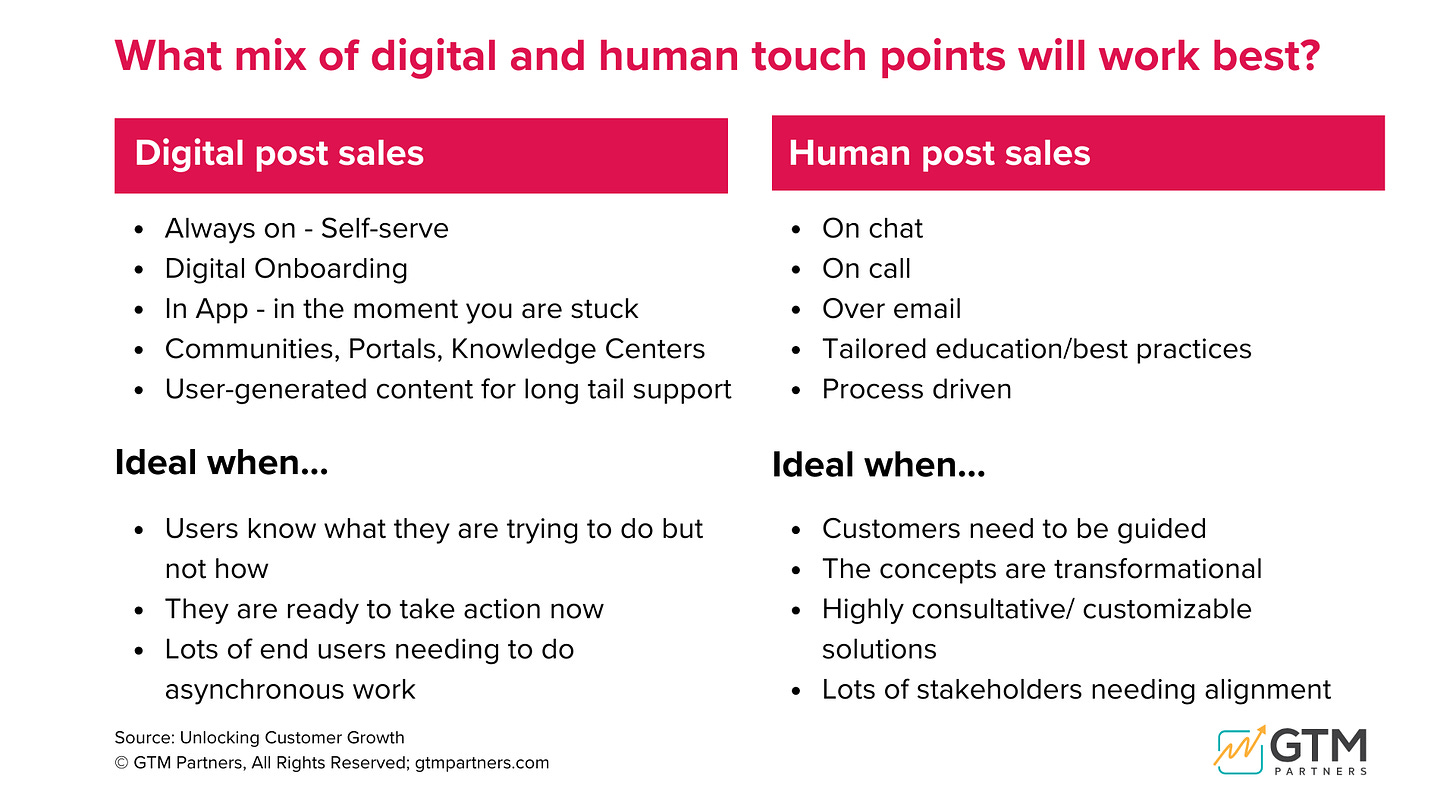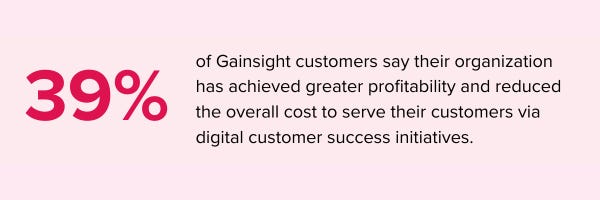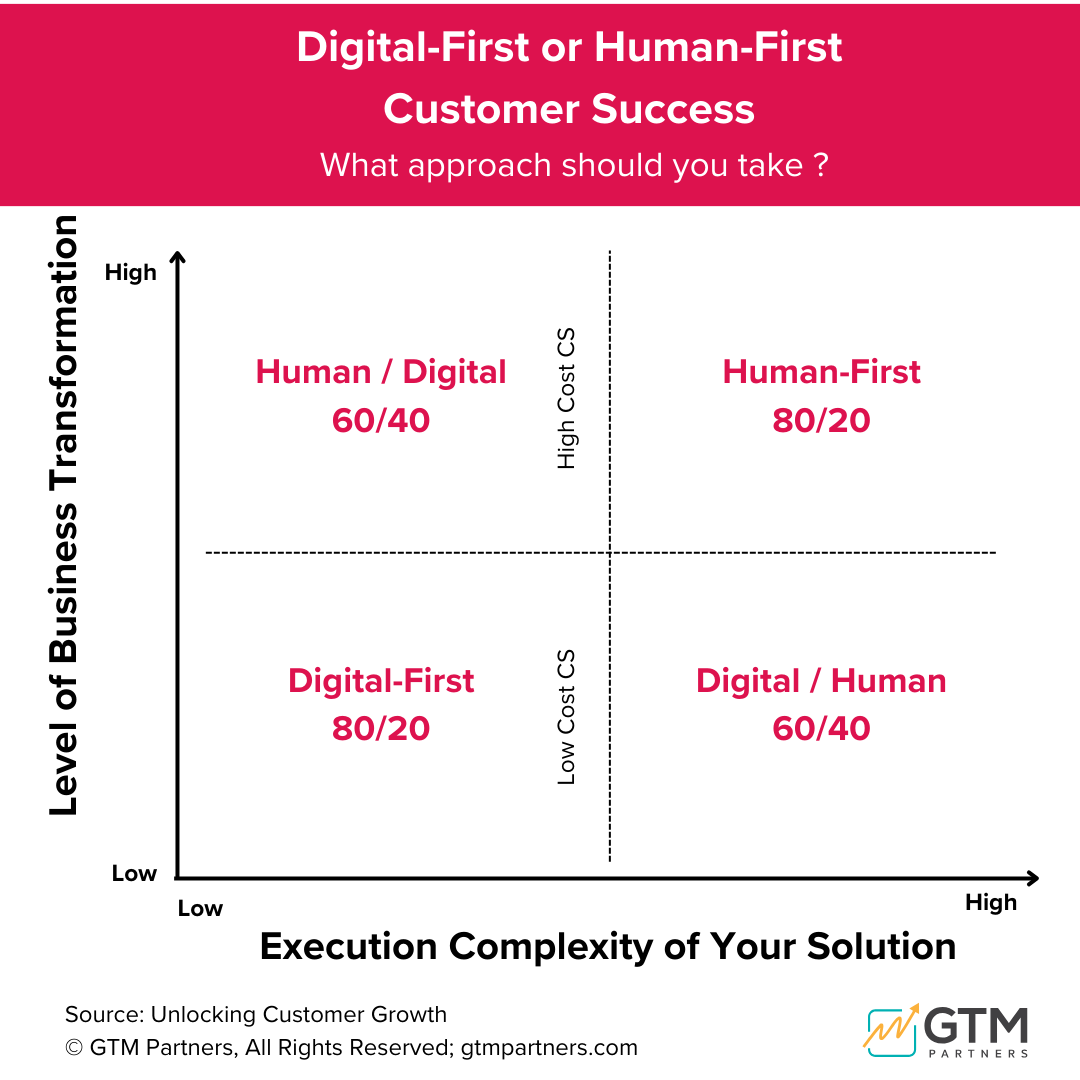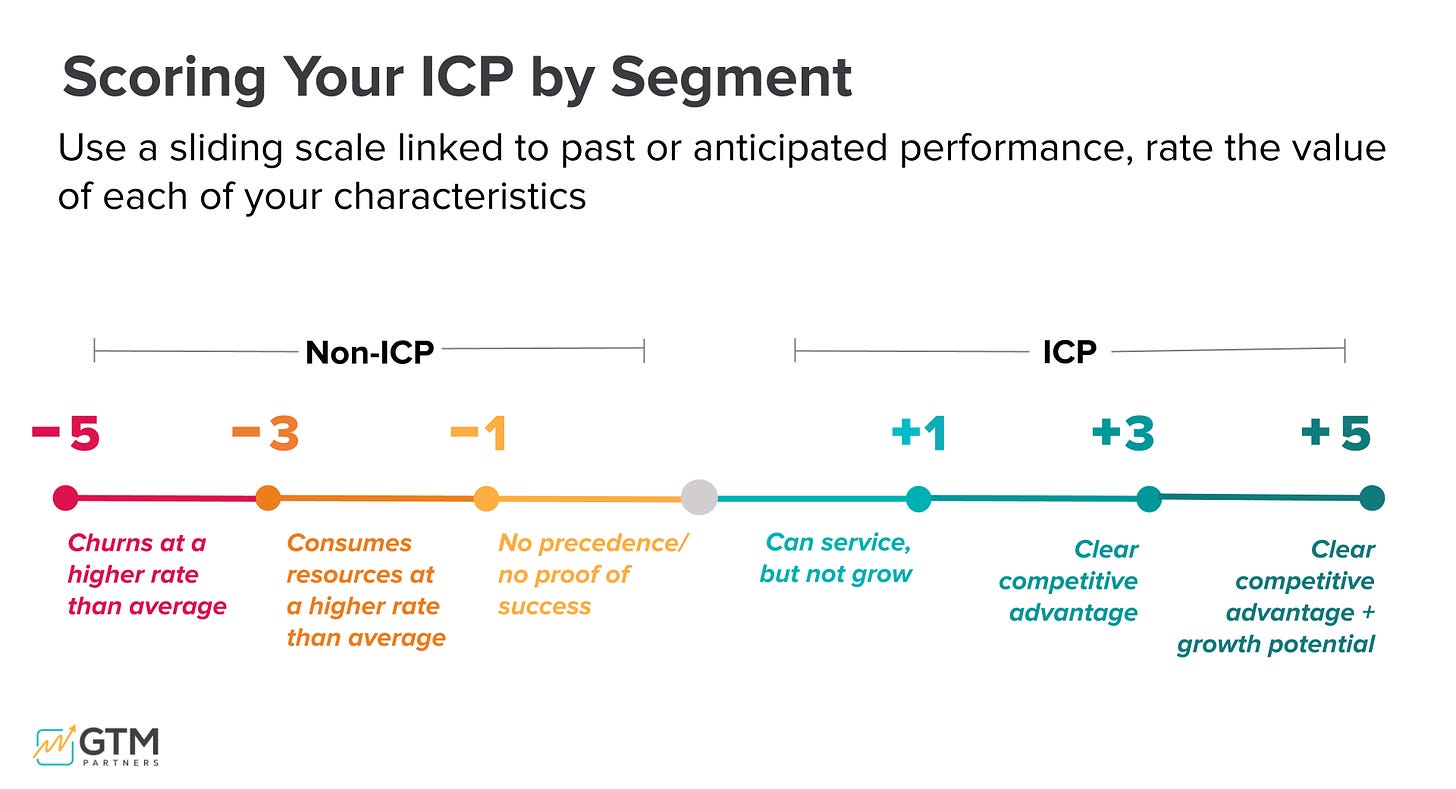Filters
New Research: How to Know Whether Digital-First or Human CS is Right for You
Thanks for being one of more than 51,000 forward-thinking GTM Leaders who subscribe to this weekly research note. We aim to be the go-to for go-to-market, so we appreciate you reading and sharing when you see something you like!
This week’s research note includes:
GTM Research: How to know whether digital or human customer success is right for your business?
GTM Poll of the Week: Does your company currently use mostly digital or mostly human CS?
GTM Problem of the Week: How to get sales focused on best-fit customers
GTM Research: Should You Reconfigure Your Customer Service Model?
A weekly deep-dive into new GTM research and insights
If you read our new report on unlocking customer growth or our research note last week on how to center customer success as a company-wide goal and not just a department, you might be wondering what implications that has for the actual set up of your customer service efforts.
Part of moving to a customer-driven growth mindset is realizing that the customers’ success can not rest solely on the shoulders of the customer success or service department.
To expand your vision, start by asking questions like, ‘How can we best ensure the success of all good-fit customers?’
For most companies, the answer lies in a mix of human and digitally delivered approaches.
Broadening Our Definition of Digital Customer Success
Many of us know what human-centered customer success looks like in the modern era: it looks like CSMs who spend their day not only on the phone, email, live chat, and Zoom talking to customers, but also engaging in numerous manual tasks to ensure customer satisfaction.
But what does “digital-first” really look like? It’s more than just in-app engagement. It also includes:
Self-Service Resources: Providing customers with comprehensive digital resources such as knowledge bases, FAQs, instructional videos, self-service portals, and customer communities. These allow customers to solve problems independently at their convenience.
Digital Onboarding: For many products, the entire onboarding experience can be automated and still allow a handoff to humans if extra support is needed.
Data and Analytics: Using data from digital interactions to gain insights into customer behavior, preferences, and needs. Data can be used to personalize the customer experience and make informed decisions about product improvements or customer support strategies.
Automated Solutions: Implementing automation and AI technologies, such as chatbots or AI-driven analytics, to provide timely and effective responses to customer queries and to streamline customer support processes.
Continuous Engagement: Engaging with customers continuously across their journey through various digital means to ensure they achieve their desired outcomes with the product or service.
The best choice for most companies is going to be a blend of human and digital customer success.
Digital-First Customer Success Can Save Time and Improve Profitability
Seeq, a company that provides analytics to process manufacturers, added a digital component through Gainsight, giving their CSMs 30% more time back to serve customers better.
Digital First or Human First?
By identifying the ideal mix of digital and human touch points, companies can create a customer success strategy that combines the efficiency of automation with the depth and personalization of human interactions.
This approach ensures that customers receive the right level of support and engagement throughout their journey, ultimately leading to higher satisfaction, goal attainment, retention, and revenue growth.
How do you know the right mix for your business?
It will vary by company but the higher the level of business transformation you offer, and the more complex your solution, the more you’ll need to rely on human-first customer success, supported by digital channels.
If your solution is tactical rather than transformative or fairly simple to execute and implement, you can more easily lead with digital support and supplement with human contact.
For most companies, a blend of digital and human support will work best. But hopefully these new frameworks will spark some good discussion with your team!
GTM Poll of the Week
GTM Problem of the Week
Send us your most pressing GTM problem, and you’ll get a short session with an analyst to answer it!
Dear GTM Partners,
I’m trying to get my team to think about not only who our best-fit customers are, but who our worst-fit customers are.
Our sales people love to sell, bless them, and they will sell to anyone they can, even if that customer is likely to churn, chew up customer success resources, and complain on social media because our product isn’t really meant for them.
(I’m specifically thinking about the fact that our best customers are mid-market but our sales hero loves to sell an ambitious SMB and it never goes well!)
Is it useful to define worst customers or better to focus on best customers?
Anonymous in NYC
Dear Anonymous in NYC,
It’s a great idea to identify and define worst-fit customers in addition to best-fit customers. Bryan even goes so far as to say your messaging should actively turn off customers who aren’t profitable for you.
Here are a few ways to get the ball rolling.
Create your clear ICP: Everyone who comes to us says they have an ICP, and it’s usually company size, employee count, maybe industry or location. It is an invaluable exercise to go much deeper than that. We can help you do it but you can also do it yourselves. Lots of information here on what to consider and who should be involved.
Score that sucker: If you want to clearly communicate not only who is good but who is less good, your scoring system has to have a negative range. Here’s what we use.
Socialize and implement the scoring model: Anyone from an SDR to an AE to a sales leader should know when they’re calling on a new account, taking a meeting, or sending a contract whether it’s a good-fit or bad-fit account. That means once you’ve identified the ICP (with input across GTM leaders, as detailed here), you have to communicate it across the organization and make sure your CRM and MAP are set up accordingly.
Compensate based on ICP: One of Lindsay’s favorite methods of ensuring sales will observe and respect overall GTM strategy is to align compensation. Sales reps should be paid more on best-fit accounts and paid less on worst-fit accounts. This strategy usually works incredibly well, because you can afford to pay more commission on accounts with a higher LTV and lower cost to serve, and sales people are notoriously motivated by money!
Hope that helps, and feel free to get in touch if you have any other questions.
Send in your GTM Problem of the Week.
We can can teach your team.
Our next cohort of GTM Certification launches soon.
GTM News
What we’re reading, watching, listening to, and paying attention to this week.
The 2024 Content Preferences Benchmark Survey from Demand Gen Report: Content preferences are shifting away from long-winded, gated pieces into shareable, social-friendly assets.
Pavilion’s Kathleen Booth on why more CMOs are becoming CROs.
From Hubspot: 23 examples of good elevator pitches and why they work.
GTM Events
A list of upcoming events of interest to GTM professionals
May 14 - 16, St. Louis, MO: Gainsight Pulse
May 23, Virtual: Elevate Ops (Pavilion)
June 6, Boston: Pavilion CRO Summit
June 7, Boston: GTM Made Simple Roadshow
July 9-11, London: GTM EMEA from Pavilion
September 18-20, Boston: INBOUND 2024
Hundreds of senior GTM leaders have taken our GTM company assessment.
Take it with your team to see how you can evolve and where you’re misaligned.
We loved seeing so many of you in Seattle last week for our GTM Made Simple Roadshow, and we’re looking forward to seeing more of you this week in St. Louis for Gainsight Pulse!
Love,
The GTM Partners Team






